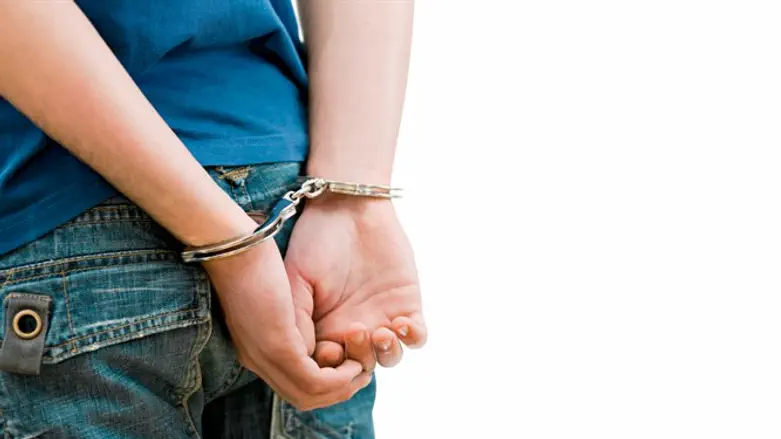
Police paid NIS 2,800 in compensation to a teenager who sued for being arrested only for his appearance, that includes long peyot and a kippah.
The police demanded that he identify himself, and he was arrested and handcuffed. During the hearings, the officer admitted that he required the boy to identify himself because "he looked like a hilltop youth".
At the outset, the prosecution described the minor's outward appearance: "Wearing a large woven kippah on his head and thick, long peyot hanging from the sides of his face to his chest."
On the date in question, one year ago, the minor traveled by light rail in Jerusalem. When he got off the train, two police officers asked him to present an ID card.
The minor asked them why, and when they repeated their demand he replied "Why? Because I have peyot and a big kippah?" After a back-and-forth the minor supplied his name and address, and the officer announced that he was being detained. When asked the reason, "the policeman jumped on the plaintiff angrily, handcuffed him behind his back and in so doing, tore the plaintiff's shirt, telling him the cause of his arrest was his refusal to identify himself."
Only after fifteen minutes did the police van arrive, all the while with the minor standing with his hands cuffed behind his back and his shirt torn at the crowded Jaffa Street train station. Additionally, the police officer tightened the cuffs and did not apply them as required by law, and when the plaintiff asked him to loosen them slightly, the officer refused.
Upon the minor's arrival at the Russian Compound police station, he was also shackled on his legs, and then had to wait about two hours, cuffed hand and foot, and the only relief was the handcuffing being switched from behind him to in front. In accordance with Youth Law provisions the minor's parents were summoned to the station, and his mother was present at the interrogation.

In contravention of the law, the minor was questioned while cuffed hands and feet. He denied that he had disrespected a police officer. When the minor noted to the policeman that he is not allowed to interrogate him while handcuffed, the officer replied, "Who knows the law, you or me?"
In light of police conduct during the incident, the minor claimed in the lawsuit that, "Because of his appearance, he and boys like him face countless police inspections, even in circumstances that involve no suspicion of them. These checks are illegal."
The lawsuit was filed for handcuffing during interrogation, handcuffing while at the station, excessive and uncalled-for hand and foot handcuffing as required by law, handcuffing a minor on a city street, false arrest, and constitutional wrongs in violation of the Basic Law of Human Dignity and Liberty.
In the defense statement filed by the police, the police officer was asked, "Why did you ask the detainee to identify himself after he got off the train?" The officer replied "This is a guy who looks like a hilltop youth, and it was downtown at rush hour." As part of a compromise arrangement, the police compensated the minor for NIS 2,800.
Advocate Menashe Yado of Honenu legal aid organization representing the minor said "the police targeted the boy only because he was a hilltop youth. They acted by virtue of stigma and profiling. The lawsuit made a minor correction, but it's the responsibility of the police staff to learn consequent lessons and bring them to ground level."